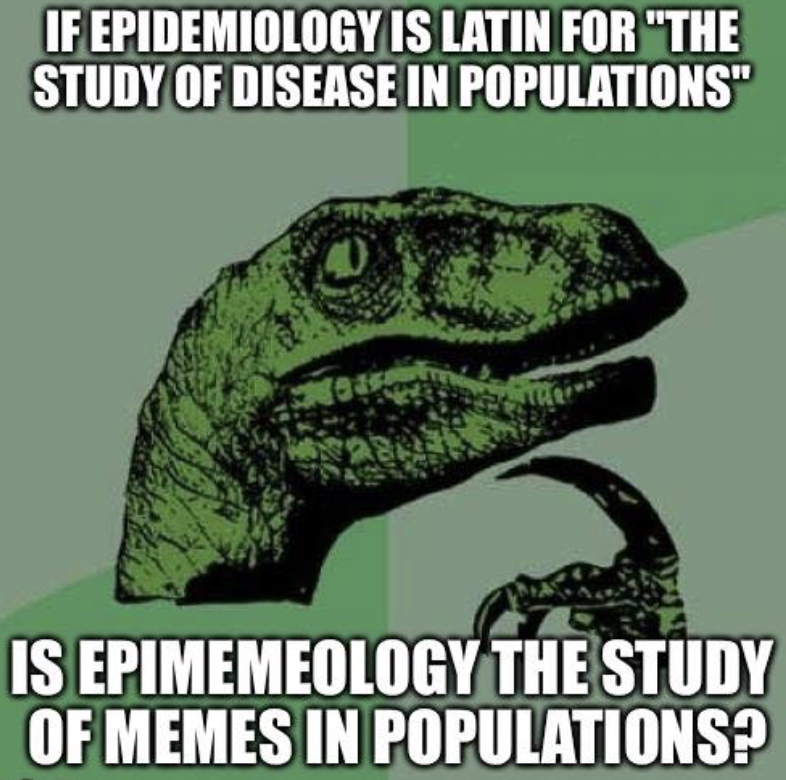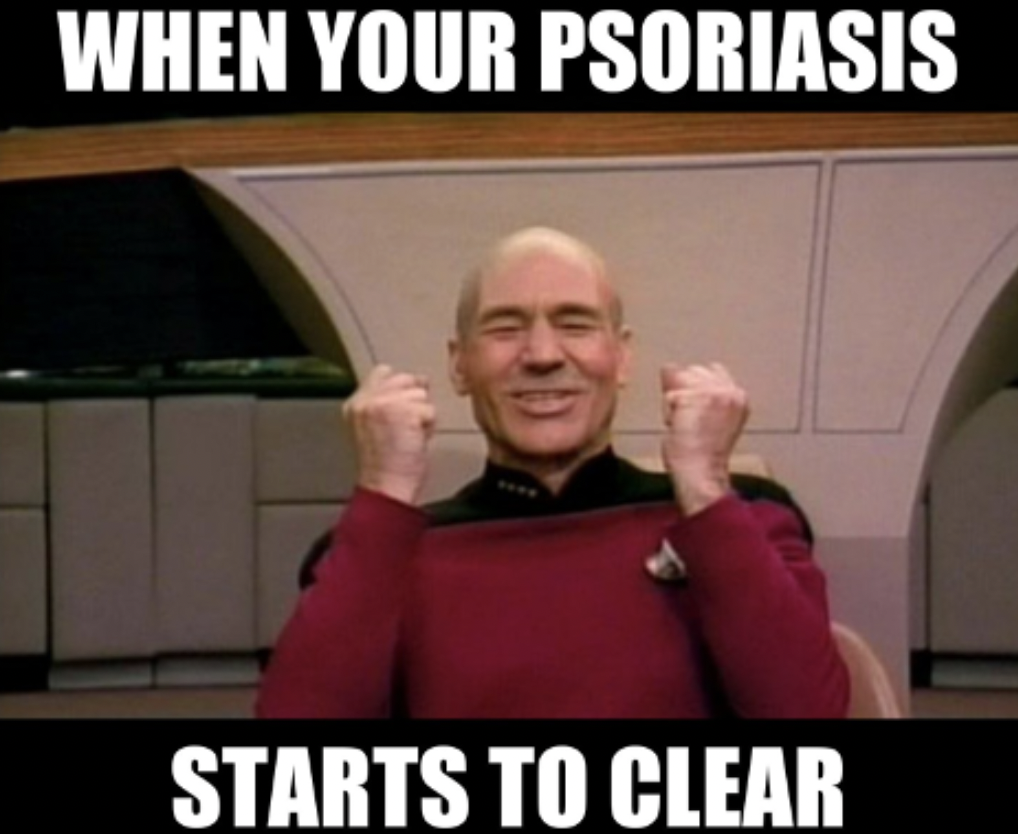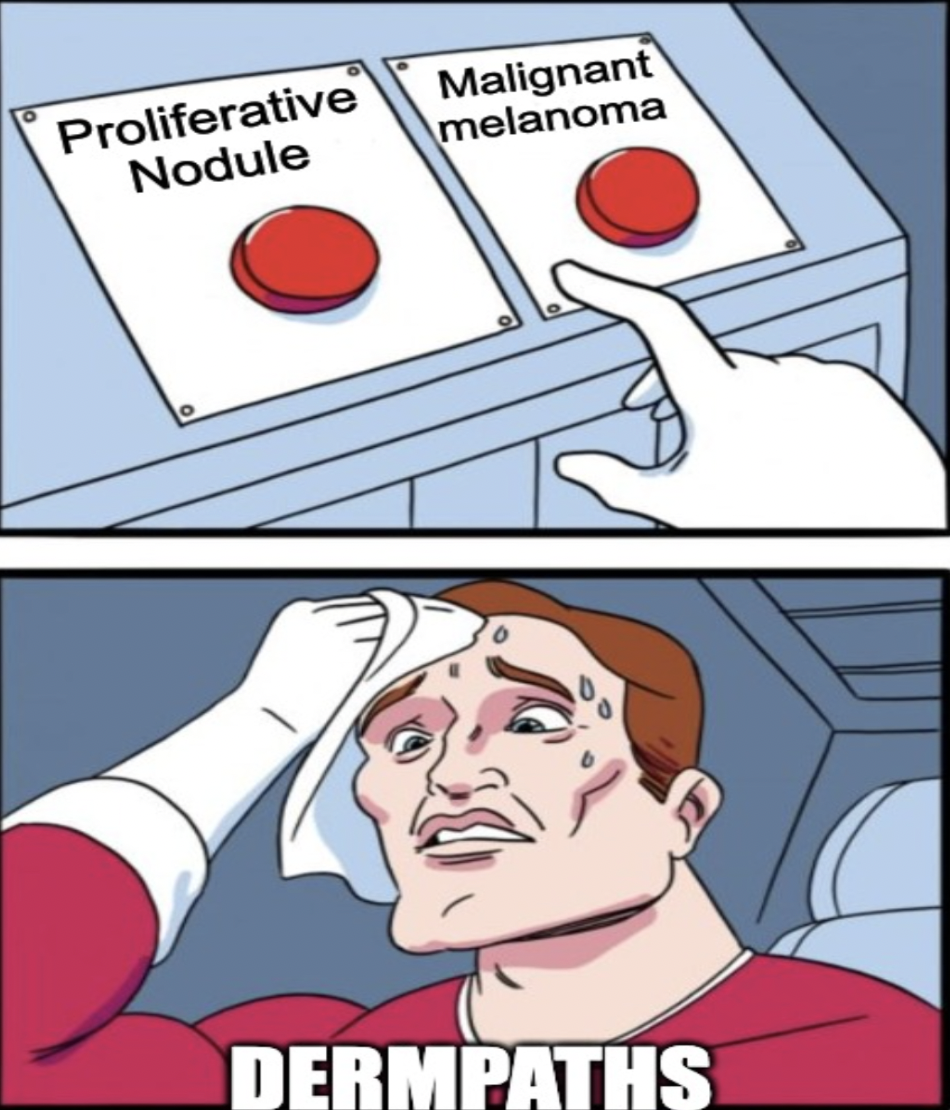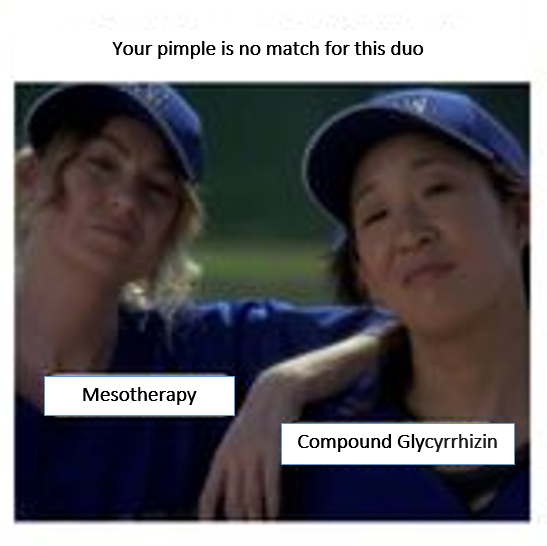THIRTY-NINTH ISSUE
july 26, 2023
Incidence and Prevalence of Diagnosed Vitiligo According to Race and Ethnicity, Age, and Sex in the US
JAMA Dermatology
Demographic differences in vitiligo diagnosis? Not all is black and white with vitiligo!
Despite its large psychosocial burden, little is known about the incidence and prevalence of vitiligo across age, sex, and race in the United States. Researchers conducted a cohort study evaluating nearly 3 million people with vitiligo (incidence), as well as a cross-sectional study of over 1 million patients with vitiligo (prevalence). Overall incidence (per 100,000 person years [PY]) and prevalence was estimated, and stratified by age, sex, and race.
What did they find?
Limitations: Only patients seeking care in an included health system’s database were included in the analysis. As not all patients with vitiligo seek care, estimates may under report the disease’s overall burden.
Main Takeaways: A diagnosis of vitiligo is more common among patients who are older, and who identify as Asian American or Hispanic/Latino.
Despite its large psychosocial burden, little is known about the incidence and prevalence of vitiligo across age, sex, and race in the United States. Researchers conducted a cohort study evaluating nearly 3 million people with vitiligo (incidence), as well as a cross-sectional study of over 1 million patients with vitiligo (prevalence). Overall incidence (per 100,000 person years [PY]) and prevalence was estimated, and stratified by age, sex, and race.
What did they find?
- Age- and sex-adjusted incidence rate (IR) of vitiligo was 22.6 per 100,000 PY (95% CI, 21.5-23.8 per 100,000 PY)
- Age- and sex-adjusted prevalence of vitiligo was 0.16% (95% CI, 0.15%-0.17%)
- IR was highest among 60-69 year olds when adjusted by sex (25.3 per 100,000 PY, 95% CI, 22.2-28.6 per 100,000 PY)
- Prevalence was highest among those 70 and older when adjusted by sex (0.21%, 95% CI, 0.19%-0.23%)
- Age-adjusted IR was highest among Asian American patients (41.2 per 100,000 PY, 95% CI, 28.2-58.2 per 100,000 PY)
- Age-adjusted prevalence was highest among Hispanic/Latino patients (0.29%; 95% CI, 0.20%-0.39%)
Limitations: Only patients seeking care in an included health system’s database were included in the analysis. As not all patients with vitiligo seek care, estimates may under report the disease’s overall burden.
Main Takeaways: A diagnosis of vitiligo is more common among patients who are older, and who identify as Asian American or Hispanic/Latino.
Malignancy rates after 5 years in patients with moderate-to-severe psoriasis treated with guselkumab
Journal of the American Academy of Dermatology
Clear Skin with a Gentle Touch: Guselkumab!
Guselkumab (TremfyaⓇ), a human monoclonal antibody that selectivity binds and inhibits the IL-23 p19 subunit, is an FDA-approved biologic for the treatment of moderate-to-severe psoriasis. Guselkumab has demonstrated long-term efficacy in the 5-year VOYAGE 1 and VOYAGE 2 phase 3 clinical trials, but the long-term malignancy risk has yet to be evaluated.
This study examined 1721 patients treated with guselkumab (>7100 patient-years (PY)) in VOYAGE 1 and VOYAGE 2 and sought to determine the long-term impact of IL-23 inhibition on malignancy risk. Malignancies were classified as either non-melanoma skin cancers (NMSC) or malignancies other than NMSC.
What did they find?
· 24 of the guselkumab-treated patients had NMSC (0.34/100PY)
· 32 of the guselkumab-treated patients had malignancies excluding NMSC (0.45/100PY)
· For comparison, the malignancy rate excluding NMSC in the general psoriasis population is reported as 0.68/100PY by the Psoriasis Longitudinal Assessment and Registry
· Malignancy rates excluding NMSC in guselkumab-treated patients were consistent with those expected in the general US psoriasis population (standardized incidence ratio = 0.93)
Main takeaway: Patients with moderate to severe psoriasis treated with guselkumab for 5 years had rates of malignancy comparable to the general and psoriasis patient population.
Guselkumab (TremfyaⓇ), a human monoclonal antibody that selectivity binds and inhibits the IL-23 p19 subunit, is an FDA-approved biologic for the treatment of moderate-to-severe psoriasis. Guselkumab has demonstrated long-term efficacy in the 5-year VOYAGE 1 and VOYAGE 2 phase 3 clinical trials, but the long-term malignancy risk has yet to be evaluated.
This study examined 1721 patients treated with guselkumab (>7100 patient-years (PY)) in VOYAGE 1 and VOYAGE 2 and sought to determine the long-term impact of IL-23 inhibition on malignancy risk. Malignancies were classified as either non-melanoma skin cancers (NMSC) or malignancies other than NMSC.
What did they find?
· 24 of the guselkumab-treated patients had NMSC (0.34/100PY)
· 32 of the guselkumab-treated patients had malignancies excluding NMSC (0.45/100PY)
· For comparison, the malignancy rate excluding NMSC in the general psoriasis population is reported as 0.68/100PY by the Psoriasis Longitudinal Assessment and Registry
· Malignancy rates excluding NMSC in guselkumab-treated patients were consistent with those expected in the general US psoriasis population (standardized incidence ratio = 0.93)
Main takeaway: Patients with moderate to severe psoriasis treated with guselkumab for 5 years had rates of malignancy comparable to the general and psoriasis patient population.
How can we differentiate proliferate nodules from malignant melanoma in congenital melanocytic nevi?
American Journal of Dermatopathology
Is PRAME a ~prime~ diagnostic tool?
Proliferative nodules (PN) are benign tumors that commonly arise in giant congenital melanocytic nevi (CMN) and are histologically similar to melanoma cells. Preferentially expressed antigen in melanoma (PRAME) immunohistochemistry and telomerase reverse transcriptase promoter mutation (TPM) sequencing are useful diagnostic assays to distinguish malignant melanoma from benign nevi, which led researchers to study their utility in distinguishing PN from malignant melanoma arising in CMN.
Researchers measured PRAME expression in PN using immunohistochemistry (n=21) and TPM expression in PN using PCR (n=9). These results were compared to expression in malignant melanoma arising in CMN (n=2).
What did they find?
Limitations: Because malignant melanoma arising in CMN is rare, the sample size is small and yields low statistical power.
Main takeaway: PRAME immunohistochemistry is nonspecific for melanoma, but can be used as an ancillary diagnostic tool in differentiating PN from malignant melanoma arising in CMN.
Proliferative nodules (PN) are benign tumors that commonly arise in giant congenital melanocytic nevi (CMN) and are histologically similar to melanoma cells. Preferentially expressed antigen in melanoma (PRAME) immunohistochemistry and telomerase reverse transcriptase promoter mutation (TPM) sequencing are useful diagnostic assays to distinguish malignant melanoma from benign nevi, which led researchers to study their utility in distinguishing PN from malignant melanoma arising in CMN.
Researchers measured PRAME expression in PN using immunohistochemistry (n=21) and TPM expression in PN using PCR (n=9). These results were compared to expression in malignant melanoma arising in CMN (n=2).
What did they find?
- 2 of 2 melanoma cases and 2 of 21 PN cases were strongly positive for PRAME, suggesting that PRAME expression is nonspecific for melanoma
- The frequency of strong PRAME expression is significantly higher in melanoma cases compared to PN (P<0.05), suggesting that PRAME positivity favors melanoma
- All PN (n=9) and melanoma (n=2) cases were negative for TPM, suggesting that TPM is not useful in distinguishing PN from melanoma arising in CMN
Limitations: Because malignant melanoma arising in CMN is rare, the sample size is small and yields low statistical power.
Main takeaway: PRAME immunohistochemistry is nonspecific for melanoma, but can be used as an ancillary diagnostic tool in differentiating PN from malignant melanoma arising in CMN.
Is Mohs Micographic Surgery with a Digital Pathological System More Efficient or Have Better Outcomes Than with a Conventional Pathological System?
Dermatologic Surgery
Don’t be a loser… use the computer!
As the number of global basal and squamous cell carcinoma cases increase, there may be a need to modify Mohs micrographic surgery (MMS). Conventional tissue prep and staining methods typically used during MMS are time consuming. Might digital scanning and staining be the key to increased efficiency?
To compare digital and conventional pathological systems during MMS, researchers analyzed patients who underwent MMS (n=80) with either digital (n=57) or conventional (n=23) pathologic reports of the frozen sections. Operation time, number of MMS stages, positive to negative margins switch rates, and difference in long axis between tumor size and defect size pre and postoperatively were measured.
What did they find?
Limitations: The study’s data was from one institution, had a small sample size, and a short-term follow up period.
Main Takeaways: Advantages of digital pathology use in MMS include shorter operation time, fewer stages required, and smaller post operative defects.
As the number of global basal and squamous cell carcinoma cases increase, there may be a need to modify Mohs micrographic surgery (MMS). Conventional tissue prep and staining methods typically used during MMS are time consuming. Might digital scanning and staining be the key to increased efficiency?
To compare digital and conventional pathological systems during MMS, researchers analyzed patients who underwent MMS (n=80) with either digital (n=57) or conventional (n=23) pathologic reports of the frozen sections. Operation time, number of MMS stages, positive to negative margins switch rates, and difference in long axis between tumor size and defect size pre and postoperatively were measured.
What did they find?
- Time from the pathologic report of the first stage to the pathological report of the last stage was 0.687-fold shorter in MMS with digital pathology compared to conventional pathology (p = 0.002)
- The number of Mohs stages, on average, in MMS with digital pathology was 0.494-fold less than with conventional pathology (p = 0.008)
- The rate of switching from positive to negative tumor margins was 1.990-fold higher with MMS with digital pathology compared to conventional pathology (p = 0.044)
- The difference in long axis between preoperative tumor size and postoperative defect size after achieving all clear margins was 0.227-fold smaller in MMS with digital pathology compared to conventional pathology (p = 0.013)
Limitations: The study’s data was from one institution, had a small sample size, and a short-term follow up period.
Main Takeaways: Advantages of digital pathology use in MMS include shorter operation time, fewer stages required, and smaller post operative defects.
How Effective is Compound Glycyrrhizin Introduced Via Mesotherapy for the Treatment of Moderate to Severe Acne
Journal of Cosmetic Dermatology
Don’t let acne get you down, new therapies are in town!
Compound glycyrrhizin, a preparation composed of glycyrrhizic acid, glycine, and cysteine, has anti-inflammatory, anti-viral, and immunomodulatory properties that have multiple clinical uses. Researchers aimed to evaluate the clinical effect of compound glycyrrhizin in the treatment of acne.
Participants (n=108) with facial acne were randomly assigned to either a control group treated with topical clindamycin monotherapy or an observational group treated with combined topical clindamycin gel and mesotherapy-introduced compound glycyrrhizin injection once weekly. After 8 weeks, water retention, inflammatory markers, and acne severity was measured using the global acne grading system (GAGS).
What did they find?
Main takeaway: Combined topical clindamycin and compound glycyrrhizin injection via mesotherapy may treat acne more effectively than topical therapy alone.
Compound glycyrrhizin, a preparation composed of glycyrrhizic acid, glycine, and cysteine, has anti-inflammatory, anti-viral, and immunomodulatory properties that have multiple clinical uses. Researchers aimed to evaluate the clinical effect of compound glycyrrhizin in the treatment of acne.
Participants (n=108) with facial acne were randomly assigned to either a control group treated with topical clindamycin monotherapy or an observational group treated with combined topical clindamycin gel and mesotherapy-introduced compound glycyrrhizin injection once weekly. After 8 weeks, water retention, inflammatory markers, and acne severity was measured using the global acne grading system (GAGS).
What did they find?
- Significant improvement in acne severity with combined clindamycin gel plus mesotherapy with compound glycyrrhizin injection after 4 weeks and 8 weeks of treatment compared to control (p<0.01, P<0.001 respectively)
- The combined treatment group had more effective water retention after treatment (p<0.01)
- While both treatment groups had reduced acne-related inflammation, there was a greater reduction in inflammatory cytokines in the combined treatment group compared to the control group (p<0.001)
Main takeaway: Combined topical clindamycin and compound glycyrrhizin injection via mesotherapy may treat acne more effectively than topical therapy alone.





